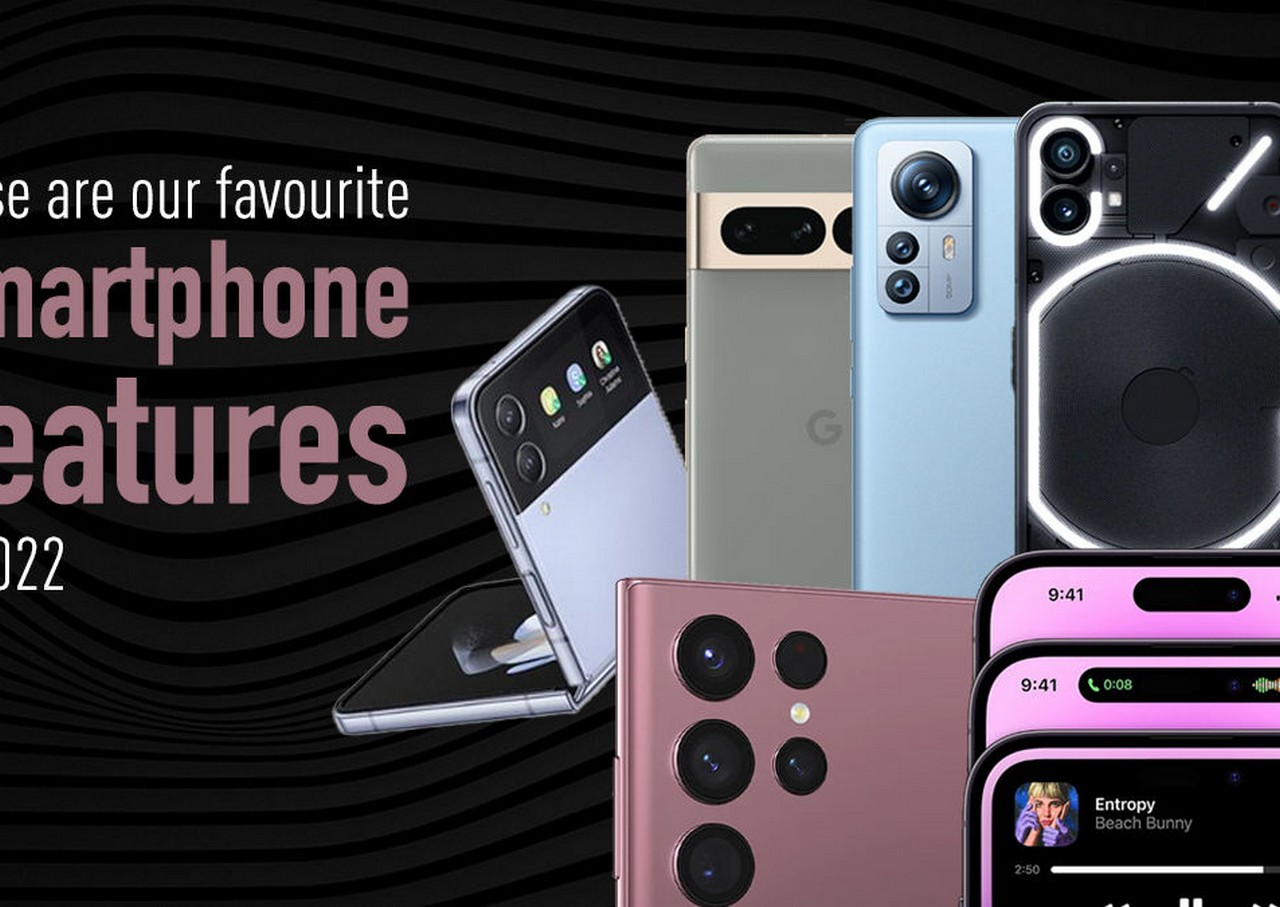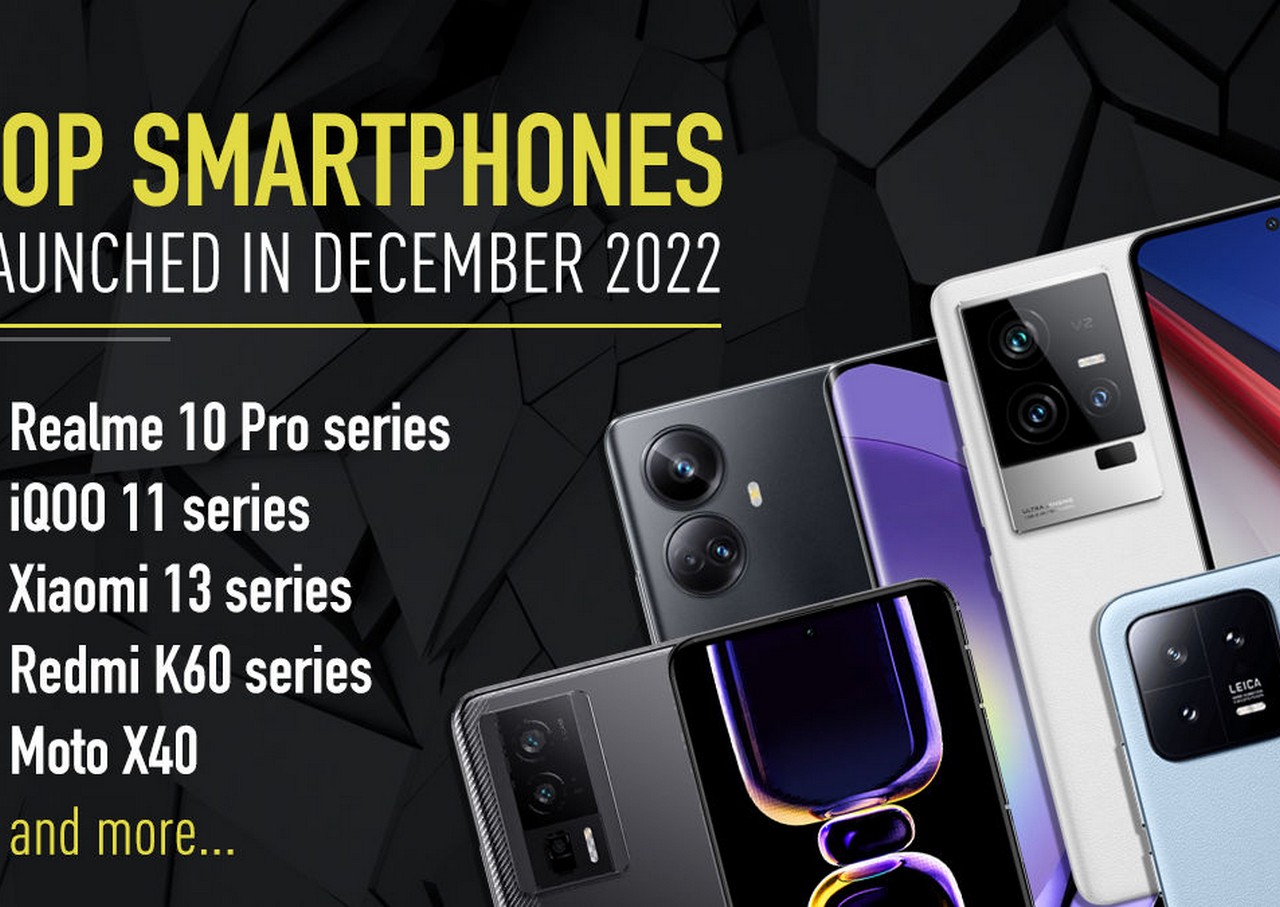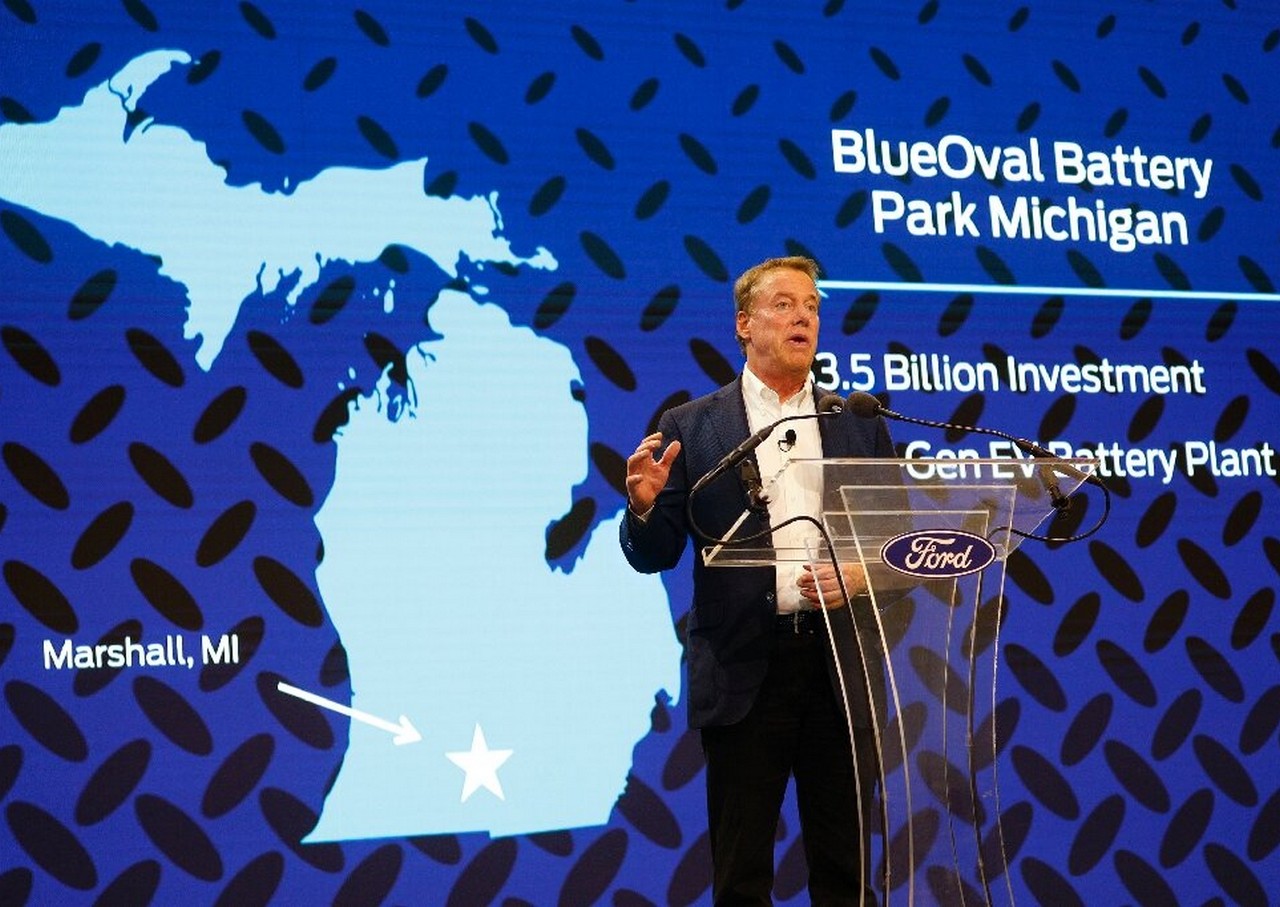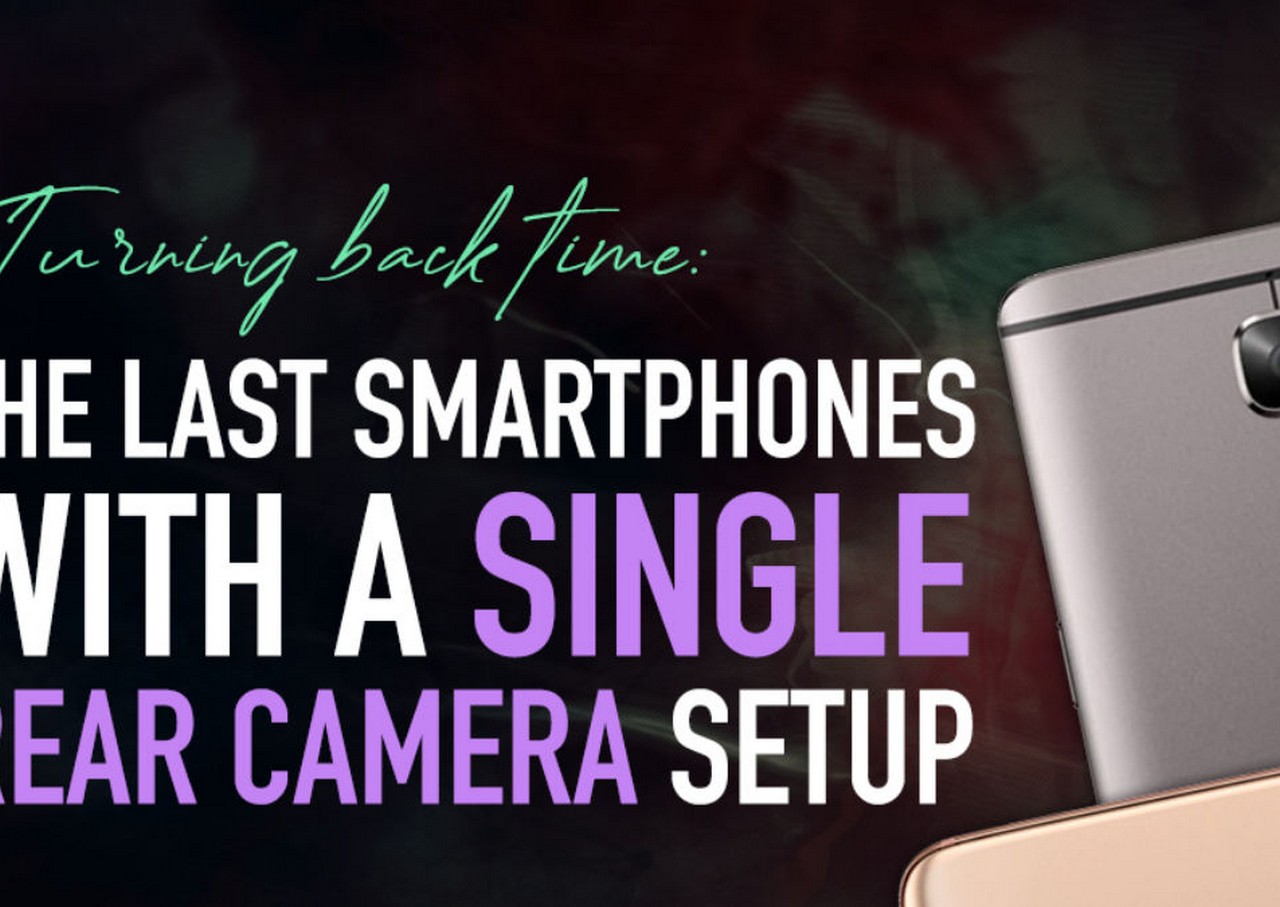The world of smartphones is continually evolving, with producers introducing new options and applied sciences with each iteration. Probably the most important developments in recent times has been the transfer in the direction of a number of cameras on the again of a smartphone, which has grow to be more and more frequent on high-end units. Many smartphones now function two, three, and even 4 lenses on the again.
Nevertheless, a number of lenses don’t essentially imply they gives you higher digital camera high quality, in actual fact, the purpose is to offer customers better flexibility when taking pictures. As an alternative of getting a single lens that might do all of it, producers began providing a number of lens with totally different options. Consider it like a DSLR digital camera with interchangeable lenses.
Nevertheless, there was one thing particular about having only a single digital camera unit on a cellphone. Perhaps it’s the simplicity of all of it? Or perhaps it was as a result of producers may focus all their consideration on a single digital camera? Regardless, smartphones with single rear cameras took some extremely good photographs due to their focus on a single sensor and software program processing. On this article, let’s check out the final smartphones from main manufacturers that introduced a single rear digital camera lens.
Do word that we’ll be limiting the units on this checklist to these priced at Rs 25,000 and above. Some producers (like Nokia) proceed to supply smartphones with a single rear digital camera within the price range phase.
1. Google Pixel 4a
The Google Pixel 4a was maybe the final of its sort to return with a single-camera setup and will nonetheless maintain its personal towards flagship units. This was achieved partly attributable to Google’s supremacy in computational pictures, which had grow to be a trademark of the Google Pixel collection. This smartphone was launched again in August 2020 at a beginning value of Rs 31,999.
By way of specs, you’ll get a compact 5.8-inch hole-punch AMOLED show, a Qualcomm Snapdragon 730G SoC, 6GB of RAM, 128GB of UFS 2.1 storage, A USB 3.1 Kind-C port, and a 3.5 mm audio jack. After all, the magic of this smartphone lies within the cameras. The only 12.2MP Sony IMX363 sensor won’t sound like a lot, however coupled with Google’s computational pictures algorithms, it takes pictures like a boss, with a great give attention to distinction and human pores and skin tones. The 8MP front-facing selfie digital camera was no slouch both.
Other than that, the Pixel 4a has twin stereo audio system, with near-stock Android and Pixel-exclusive options similar to limitless storage in Google Images. The smartphone acquired its final main OS replace, Android 13, in 2022.
2. Apple iPhone SE (2022)
Whereas most high-end smartphones have moved on to multi-camera setups, there may be one that also gives a single-camera setup, the Apple iPhone SE (2022). As one of many latest telephones on this checklist, it’s also essentially the most highly effective due to the A15 Bionic chipset. It is usually the one one which helps the newest computational algorithms similar to Good HDR 4 and Deep Fusion.
On the floor, the iPhone SE (2022) looks like a regular run-of-the-mill flagship smartphone with a steel glass-sandwich design, IP68 water and dirt resistance ranking, wi-fi charging, and Contact ID. Other than that, you get the advantages of the Apple ecosystem similar to AirDrop and iMessage. This smartphone was launched in March 2022, so Apple will proceed to assist the cellphone for a few years to return. This smartphone retails for round Rs 49,900 in India for the bottom 64GB variant.
3. Samsung Galaxy S9
Samsung, the world’s second-biggest smartphone firm, additionally had some nice telephones launched through the years. The Galaxy S collection has been their staple flagship providing since 2010, and the Galaxy S9 (launched in 2018) was no exception. It was their base providing alongside the S9 Plus, and each of them had some nice options.
The Galaxy S9 was a steel glass-sandwich design, with an IP68 water and dirt resistance ranking. The entrance of the machine sported an attractive 5.8-inch 1440p Tremendous AMOLED show with HDR10 assist and a 3D Contact function for the house button for good haptic suggestions. The chipsets had been totally different relying on the place you had been dwelling. For the west, the Galaxy S9 was powered by the Qualcomm Snapdragon 845, whereas for India, the smartphone was powered by Exynos 9810.
The battery capability was 3000mAh, which doesn’t seem to be a lot in comparison with present gen smartphones, but it surely was fairly first rate for the time. The only 12MP rear-facing digital camera with OIS was a superb shooter and was succesful sufficient to document 4K movies at 60 frames per second. In actual fact, this smartphone was one of many only a few that might shoot loopy slo-mo movies at 960 frames per second! (albeit at a decrease decision of ‘simply’ 720p).
The 8MP selfie digital camera additionally had some cool options. You can carry out twin video calls utilizing each cameras concurrently, in addition to an Auto HDR that might right publicity ranges on topics when beneath harsh daylight.
The Galaxy S9 additionally had some attention-grabbing options that aren’t really current in right now’s flagships. The cellphone had an Iris scanner for biometric authentication, and MST (magnetic safe transmission), that mimicked magnetic stripe playing cards in order that you can pay even on previous PoS machines. It additionally had a devoted coronary heart charge and SpO2 sensor close to under the LED flash.
This smartphone was launched on February 2018, with a price ticket of Rs 57,900 with 64GB of storage and 4GB of RAM.
4. OnePlus 3T
OnePlus was the unique ‘flagship killer’ when it got here to smartphones. It was out to show that flagship telephones needn’t be that costly. Initially, the corporate adopted the system of launching a single machine per yr, however by the point the OnePlus 3 launched, the corporate figured, it may do higher. The OnePlus 3T had some minor upgrades similar to an upgraded Snapdragon 821 chip, an elevated battery capability, and a few cool finishes similar to Gunmetal Gray and Midnight Black to face out from the gang.
This smartphone had a unibody aluminium design with the entrance show protected by Corning’s Gorilla Glass 4. The 5.5-inch Optic AMOLED show was glorious, with a 1080p decision and vibrant colours.
The 16MP rear-facing digital camera got here with OIS and did its job effectively. You can document movies as much as 4K at 30 frames per second. The front-facing digital camera was additionally the identical decision, albeit with a distinct sensor (the Sony IMX471 which remains to be used even right now on the OnePlus 11 collection).
The 20W Sprint charging was extremely quick and will cost the smartphone from 0 % to full in round 1.5 hours. That was a handy function and was one of many first units to supply quick charging as normal. This cellphone was launched at a value of Rs 29,999 for the 6GB RAM and 64GB of inside storage variant.
5. Motorola Moto Z and Moto Z Power
The Moto Z collection had been a number of the finest smartphones launched by Motorola. Each the Moto Z and Moto Z Power had been flagship smartphones with some nice options. The telephones had been powered by Qualcomm Snapdragon 820, and the shows had been 5.5-inch 1440p AMOLED shows. The one distinction between Moto Z and Moto Z Power is that the Moto Z Power had shatterproof glass, a much bigger 3500 mAh battery (versus 2600mAh one on the Moto Z), and the next res 21MP rear predominant digital camera (in comparison with 13MP one on the Moto Z).
The distinctive function of the Moto Z collection was the Moto Mods. They had been basically magnetic snap-on equipment, which might improve the performance of the machine. Some common mods at the moment had been the JBL Speaker mod, a battery financial institution mod, and a projector mod.
These smartphones had been launched in 2016, and the Moto Z was priced at Rs 39,999 in India. The Moto Z Power was obtainable solely within the USA for a value of $720 (approx. Rs 50,000)
6. Xiaomi Mi 5
The Xiaomi Mi 5 was a flagship smartphone launched in 2016. It had a compact 5.15-inch 1080p IPS LCD show protected by Corning Gorilla Glass 4. The specs had been fairly highly effective (for the time) with a Snapdragon 820 SoC, 3GB of RAM, and 64 GB of inside storage. The rear digital camera was a 16MP sensor with OIS, and the selfie digital camera was a 4MP Ultrapixel sensor.
The 3000 mAh battery was fairly good and supported 18W fast charging. This smartphone was launched again in 2016. The software program was first rate with MIUI 7 based mostly on Android 6.0 marshmallow. At launch, the Mi 5 was priced at Rs 24,999.
7. Sony Xperia Ace
The Xperia Ace is technically Sony’s final smartphone to be launched with a single rear digital camera. It was additionally the fabled Xperia XZ4 compact that by no means made its option to the worldwide markets and was restricted to Japan. This compact smartphone has a 5-inch LCD with FHD+ decision and 18:9 side ratio. The entrance comes with the traditional massive Sony bezels alongside a twin audio system setup and 8MP selfie cam.
Inside, the cellphone is working on the Snapdragon 630 alongside 4GB RAM and 64GB of storage, which is expandable. On the again, was a single 12MP mixed with an LED flash. The suitable-hand facet homes the fingerprint sensor and quantity buttons. By way of battery, you’re looking at a 2700 mAh cell with 18W fast charging.
This smartphone was launched in Might 2019 with a value of JYP 48,600 (or approx. Rs 31,000).
8. Huawei Mate 8
The Huawei Mate 8 was an attractive flagship smartphone launched by Huawei in 2015. It had a unibody aluminium development, with a 6-inch IPS NEO LCD show protected by Corning Gorilla Glass 3 on the entrance. This smartphone was powered by Huawei’s very personal Kirin 950 chipset and was powered by an enormous 4000 mAh battery.
The only 16MP rear digital camera with OIS can document as much as 1080p video at 60fps, and the 8MP selfie digital camera can be fairly first rate with 1080p movies at 30fps. The software program powering this smartphone was the EMUI based mostly on Android 6.0, it does have some good options similar to knuckle gestures, the place you possibly can launch apps along with your knuckles.
9. ASUS Zenfone AR
Launched in 2017, the ASUS Zenfone AR was one of many coolest smartphones launched by the corporate. It had assist for Google Tango, the place it will use cameras and AR (Augmented Actuality) to assist measure stuff in your house to play AR video games. This cellphone had a Qualcomm Snapdragon 821 on the helm, together with 6GB of RAM and 64GB of storage.
The only 23MP rear-facing digital camera with OIS was fairly first rate for pictures and video. You can additionally document movies as much as 4K at 24 fps on this smartphone. By way of selfies, the 8MP digital camera was thought-about greater than sufficient. The pricing was round $600 (approx. Rs 39,000), which was fairly excessive at the moment, simply to make use of Google Tango. Assist for which was stopped in 2018.
10. OPPO R9s Plus
The OPPO R9s Plus was an higher midrange smartphone launched by OPPO in December 2016. It was the larger brother of OPPO R9s, with a 6-inch 1080p AMOLED show protected by Corning Gorilla Glass 5.
The Qualcomm Snapdragon 653 was highly effective sufficient for every day duties, but it surely wasn’t fairly flagship-grade. The 16MP rear digital camera with OIS was good at daylight pictures and was succesful sufficient to document 4k movies, it will wrestle at night time with grainy pictures. The entrance digital camera was 16MP in decision and you’ll get some nice selfies.
The battery capability was fairly spectacular at 4000mAh and complementing it was the 20W SuperVOOC charging know-how. This smartphone was launched in December 2016 at a value of CNY 3,499 (approx. Rs 35,000) and was restricted to China.
In order that was a glance again at a number of the final units to launch with a single-rear digital camera. From the best way issues are going, it seems just like the multi-camera setup would be the approach for corporations. Who is aware of, perhaps there’ll quickly be one other breakthrough that sees single rear cameras again in motion!







